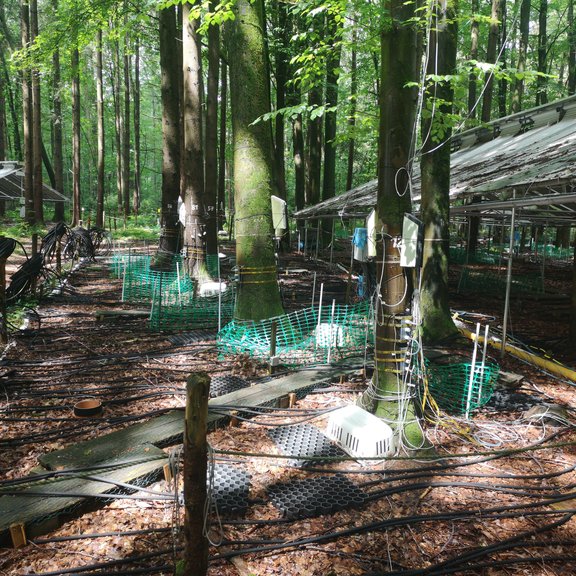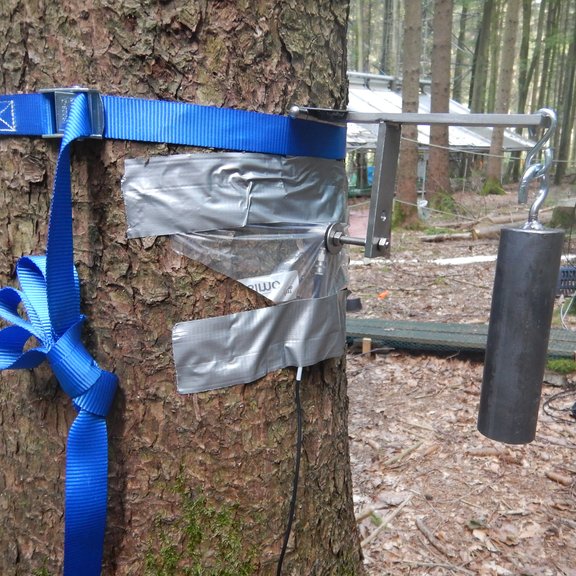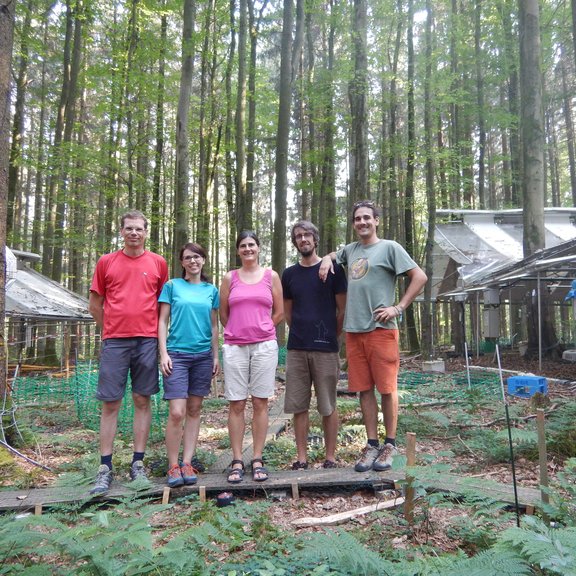Project
Drought acclimation and recovery of beech and Norway spruce
Project leader: Barbara Beikircher
Project members: Bär Andreas, Dämon Birgit, Ganthaler Andrea, Guggenberger Andreas, Held Magdalena, Knüver Timo, Lechner Valaina, Losso Adriano, Tommedi Ivo, Wegher Mario
Funding: FWF
Duration: 2019-2022
Forest are of great economic and ecological importance. In Europe, like in many regions worldwide, intensities and frequencies of heatwaves and drought events are expected to increase in near future, with negative impacts on growth and survival of trees.
The present project deals with ecophysiological aspects of the acclimation of European beech and Norway spruce to repeated summer drought and subsequent recovery. It is carried out in frame of the “Kranzberg Roof Project” (KROOF), which has been initiated in 2013, and aims at understanding how mature trees react to extreme drought. Therefore, in a mixed stand of European beech and Norway spruce, summer precipitation was excluded from 2014 to 2019 on defined plots by means of rainout-shelters. In summer 2019, plots were re-watered. Various hydraulic and anatomical parameters are monitored before, during and after re-watering. Specifically, trunk water content, specific hydraulic conductivity and vulnerability to drought-induced embolism are analyzed at defined dates, and related to xylem anatomical parameters. Further, on selected days, cavitation is monitored on-line by usage of ultrasonic emission sensors. Additionally, potted juvenile trees will be exposed to different drought stress levels to study recovery ability after drought.
The project will provide new insights into drought resistance and recovery potential of two economically important forest species. It also allows to test the applicability of the electrical resistivity tomography to monitor tree water status. The project is carried out in cooperation with the TU Munich (Ecophysiology of Plants, Thorsten Grams).

Rainout shelters and installation of various sensors to analyse drought acclimation on adult plants

Ultrasonic sensor attached to a spruce stem to monitor cavitaton events in vivo.

Stefan Mayr, Andrea Ganthaler, Barbara Beikicher, Andreas Bär und Adriano Losso at the field site in the Kranzberg forest
Outcomes:
Knüver, T et al. (2022): Recovery after long-term summer drought: hydraulic measurements reveal legacy effects in trunks of Picea abies but not in Fagus sylvatica. Plant Biology 24/7, S. 1240 - 1253. https://doi.org/10.1111/plb.13444
Was uns Ultraschall über den Wald erzählt. scilog. 20.03.2023. https://scilog.fwf.ac.at/biologie-medizin/17537/was-uns-ultraschall-ueber-den-wald-erzaehlt
